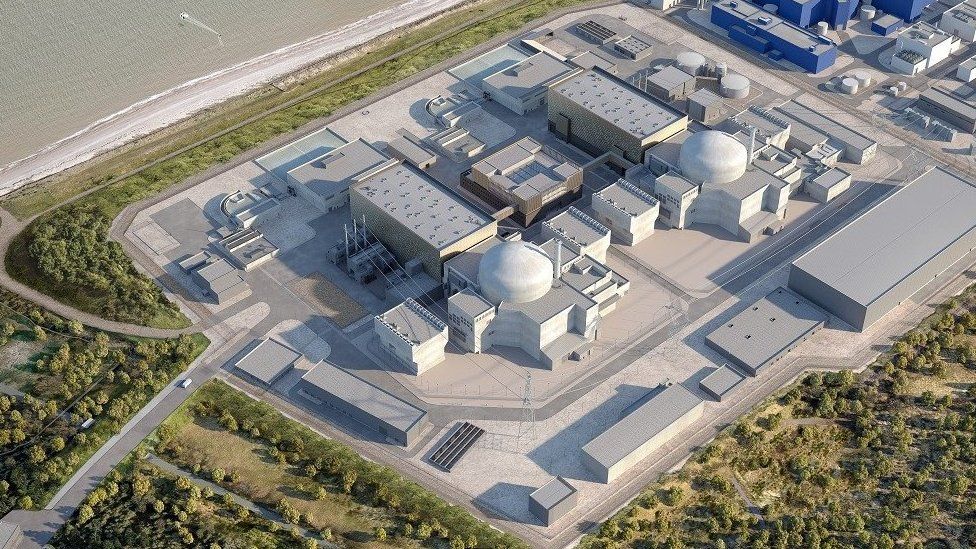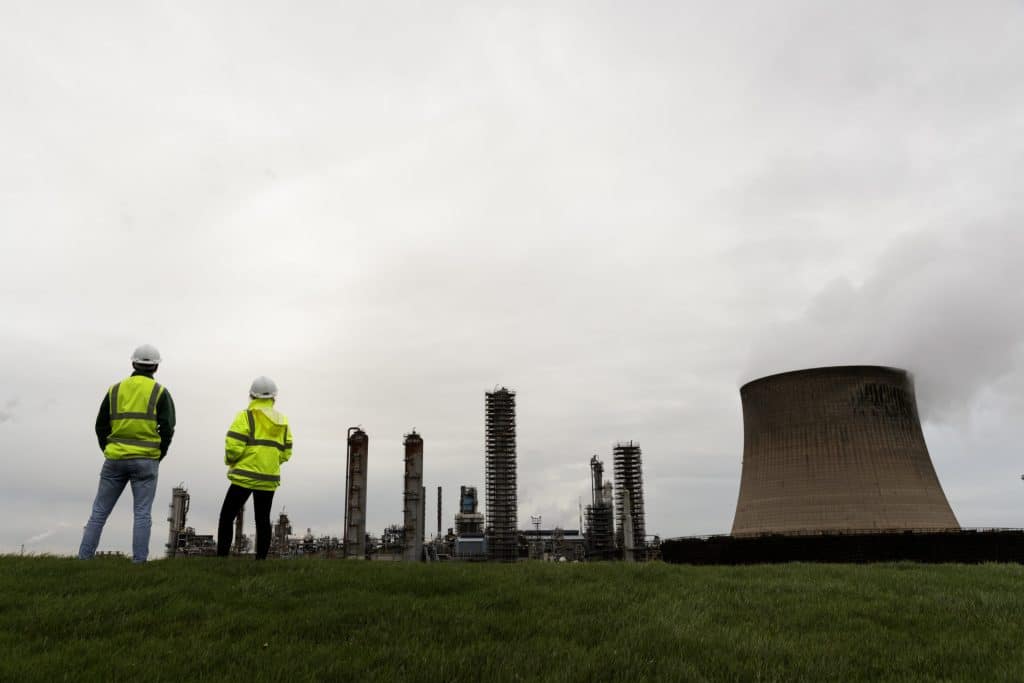Putin drives UK’s energy policy to the nuclear option

This post was originally published on this site
The Russian president is playing chief villain, with climate change the sidekick, pushing Britain to take the nuclear road to energy security, cheaper bills, and lower carbon; well, that’s how it comes across
The UK government has outlined plans for the UK’s biggest expansion of nuclear power for 70 years, with proposals to build a major new power station, along with investment in the production of advanced fuels.
Publishing its Civil Nuclear Roadmap, the government said its proposals are intended to give industry “certainty of the future direction of the UK’s ambitious nuclear programme” up to 2050, on top of the government’s existng commitment to Sizewell C, and its efforts to promote the development of small modular reactor (SMR) technology.
Russian president Vladimir Putin looms large in the government’s announcement – as the villain of the piece. Hardly surprising, no doubt, given the turmoil brought about by Russia’s illegal invasion of Ukraine two years ago, but it does bring a rather odd (dare we say invasive?) note to the tone.
Claire Coutinho, secretary of state for energy security and net zero, said: “Strengthening our energy security means that Britain will never again be held to ransom over energy by tyrants like Vladimir Putin. British nuclear, as one of the most reliable, low-carbon sources of energy around, will provide that security.
“We’re making the biggest investment in domestic nuclear energy in 70 years. Our £300m plan to produce advanced nuclear fuel in the UK will supply nuclear plants at home and overseas – further weakening the Kremlin’s grip on global energy markets.
“From large gigawatt projects to small modular reactors, the UK’s wider nuclear revival will quadruple our nuclear capacity by 2050 – helping to power Britain from Britain.”
All very ‘Cold War’, but ministerial theatrics intended for the public gallery are one thing; industry will be more concerned with the practicalities of the proposals, than the geo-political posturing.
The road ahead
According to the Department for Energy Security & Net Zero (DESNZ), the roadmap sets out how the UK will increase generation of its home-grown nuclear energy by up to four times to 24 gigawatts (GW) by 2050 – enough, it says, to provide a quarter of the UK’s electricity needs.
The plans include next steps for exploring a GW-scale power plant as big as Sizewell in Suffolk, or Hinkley in Somerset, each of which is said to be capable of powering six million homes each.
Furthermore, as Coutinho said, up to £300m will be invested in the UK production of fuel required to power high-tech new forms of nuclear reactors, known as HALEU. Currently, the fuel is only commercially produced in Russia.
DESNZ adds that, as the first country in Europe to launch a HALEU programme, the UK will “lead the way” to provide the world with this form of uranium fuel, with the first plant aiming to be operational early in the next decade.
Meanwhile, an additional £10m will be provided to develop the skills and sites needed to produce other advanced nuclear fuels in the UK; helping, the government says, to secure long term domestic nuclear fuel supply.
The roadmap also includes a government ambition to secure 3-7GW worth of investment decisions every five years from 2030 to 2044 on new nuclear projects.
Quite how this will square with the outcome of this year’s highly anticipated general election remains to be seen. There’s little expectation that Rishi Sunak will be prime minister come the day after, but politics can be a fickle trade.

As for the prime minister, he said of the plans: “Nuclear is the perfect antidote to the energy challenges facing Britain – it’s green, cheaper in the long term and will ensure the UK’s energy security for the long-term.
“This is the right long-term decision and is the next step in our commitment to nuclear power, which puts us on course to achieve net zero by 2050 in a measured and sustainable way.
“This will ensure our future energy security and create the jobs and skills we need to level up the country and grow our economy.”
Andrew Bowie, minister for nuclear, added: “The government’s investment in nuclear will ensure the UK remains at the forefront of technological developments.
“Our plans will give investors the confidence to back new UK projects, with a simpler process for locating new schemes and clear support for private sector companies developing innovative new technologies.
“By meeting a quarter of our electricity demand with nuclear, we will strengthen our energy independence, reduce bills and support jobs across the UK.”
The roadmap will also confirm plans for decommissioning to make sure, it is said, they remain suitable for new nuclear technologies and protect future generations from bearing the costs.
Industry reaction

Tom Greatrex, chief executive of the Nuclear Industry Association, said: “We welcome the publication of the roadmap – the commitment to explore a further large-scale project beyond Sizewell C in parallel with the deployment of SMRs is very welcome.
“We will need both large and small nuclear at scale and at pace for our energy security and net zero future. Allowing developers to engage with the government about Regulated Asset Base funding models should also make it cheaper to finance projects, cutting costs to the consumer.
“Decisions on 3-7GW in each five year period provide the greater clarity and predictability, which in turn enables supply chain investment and more UK content in the future fleet.
“The commitments to maximise our use of regulatory assessments already undertaken overseas will help get innovative reactor designs into construction faster and reduce the duplication in regulatory activity that eats up time for no additional benefit.”
Sue Ferns, senior deputy general secretary of Prospect trade union, said: “Commitment to a long-term investment in new nuclear capacity is most welcome.
“Nuclear is an essential part of a low carbon, secure energy strategy that should also deliver good, clean jobs at scale. Investment in both GW-scale power plants as well as SMRs is critical to ensuring a nuclear renaissance, as is reducing our exposure to Russian nuclear fuel production.
“Prospect looks forward to playing an active role in delivering this mission that is critical to meeting our net zero and energy security goals.”
Babcock’s chief executive for Nuclear Harry Holt, said: “The UK’s Nuclear Roadmap will provide opportunities for the whole civil nuclear sector. Babcock, through our Cavendish Nuclear business, is committed to developing UK capability, jobs and skills and this is a great step in the right direction.”
Carol Tansley, vice president of UK new build Projects at X-energy, said: “We’re delighted this ambitious roadmap recognises the vital role in the UK energy mix for advanced modular reactors (AMRs).
“The announcement of funding for an advanced fuel enrichment facility is also a very welcome demonstration of commitment to deliver the next generation nuclear technologies in the UK. We look forward to engaging in the forthcoming consultations to create a blueprint for successful deployment.”
Gwen Parry-Jones, chief executive of Great British Nuclear (GBN) said: “Since Great British Nuclear started the SMR technical selection process last July, we have moved strongly forward and are on track to complete vendor selection later this year. Shortly we will invite the six companies we have selected to submit tenders.
“The Civil Nuclear Roadmap provides a framework for GBN to help deliver more safe, clean and affordable UK nuclear power to UK consumers. Together with industry, we will enthusiastically take up the role the government has set out for us in delivering and advising across the UK’s nuclear programme. We are actively building GBN’s capability to take on the challenge ahead.”
Chris O’Shea, group chief executive, Centrica, said: “The UK’s ambitious net zero targets will only be met if we utilise all of the tools at our disposal, including nuclear power generation. Centrica has invested in nuclear power generation for almost 15 years and we know the benefits it can create for customers and the country. We welcome the roadmap set out by the government today as we look to support the UK’s efforts to create a more secure, resilient energy system for the future.”
Dr Fiona Rayment OBE FNucI, president of the Nuclear Institute, said: “I am delighted to see the publishing of the Nuclear Roadmap. It not only continues to provide a strong signal from government on nuclear, but reaffirms the only way to achieve carbon neutrality for energy whilst maintaining both energy and national security is through nuclear as a significant part of the UK energy mix.
“Reaching 24GW by 2050 is achievable but challenging and recognising the need to address the skills and capability challenges in enabling this is key. The Nuclear Institute, as the professional membership body for the sector, assists in creating this capability and we are proud to support our nuclear workforce in the years ahead.”
Andrew Murdoch, UK managing director of advanced modular reactor developer, newcleo, welcomed the announcement by government, saying it offers “strong support for our sector and outline a clearer future for nuclear energy policy in the UK, be it big, small or advanced”.
He added: “We now look forward to participating in the government’s consultations on both siting and the routes to market for advanced technologies ahead of developing our first of a kind advanced modular reactor here in the UK by 2033.
“Newcleo is ready to invest billions of pounds of private money in the UK and create thousands of high value jobs in local communities with our innovative reactors. [The] announcements help to provide the framework in which the industry and government can work together to realise the ambition to deliver 24 GW of much-needed nuclear power by 2050.”
Main image: Russian president Vladimir Putin. Source: Wikipedia. Creative Commons CC-by-4.0.
Read next: Tunnelling machine Stella-Rose bores a world record
Are you a building professional? Sign up for a FREE MEMBERSHIP to upload news stories, post job vacancies, and connect with colleagues on our secure social feed.





Responses